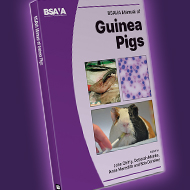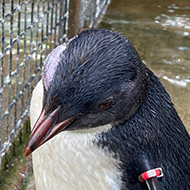Short-eared owls show large degree of movement, study finds
Tracked owls travelled widely across Europe and North Africa.
New research into short-eared owls has revealed an unexpectedly large degree of movement, as they travel to breed across Europe and North Africa.
The movement is believed to be in response to the unpredictable availability of voles, the owls’ main food source.
The study was conducted by the British Trust of Ornithology (BTO), in collaboration with researchers from the University of Iceland and the Spanish National Research Council, in the hopes of better understanding the species. Before the study, ecologists were lacking key information about the birds’ movements and the connectivity between populations.
The researchers made use of tracking technology to follow the movements of 47 short-eared owls, tagged in Iceland, Scotland and Spain.
Tracking data revealed a significant amount of movement from the tracked birds. While some birds that were tagged in Scotland and Spain travelled across Europe and North Africa, one bird tagged in Iceland flew to Great Britain.
Nine of the short-eared owls were monitored while nesting across two seasons, which revealed distances between the nests used by individuals in sequential years ranging from 41km to 4,216km.
This could be the longest known distance between nest sites by any bird.
Of these nine owls, two tagged females were identified to be nesting just 2km apart on the Isle of Arran in Scotland in 2021. In 2022, one went on to breed in northern Norway and the other went to breed on the Pechora Delta, in Arctic Russia.
Another female was logged to have bred twice in 2018, once in Scotland and once in Norway.
The researchers also discovered that, out of 18 successful breeding attempts by 14 tagged females, in all but two instances the females left before the youngest chick was independent, so the male had to raise the brood.
These new findings seem to suggest that the owls are travelling large distances in search of enough voles to feed the next generation. While short-eared owls are able to consume other prey if voles are unavailable, they are instead choosing to move to other areas.
By travelling to breed in areas more abundant in voles, the short-eared owls are improving the chances of their young surviving another year.
John Calladine, BTO senior research ecologist and lead author, said: "This new knowledge has significant implications for attempts to protect and conserve this species, and underlines a need to collect information on short-eared owl populations from sufficiently wide geographic scales and/or over the long term.
“Importantly, conservation action for the birds will need to be on a similarly wide scale."
The full study can be found in the journal Ibis.
Image © Shutterstock






 The Federation of Independent Veterinary Practices (FIVP) has announced a third season of its podcast, Practice Matters.
The Federation of Independent Veterinary Practices (FIVP) has announced a third season of its podcast, Practice Matters.
